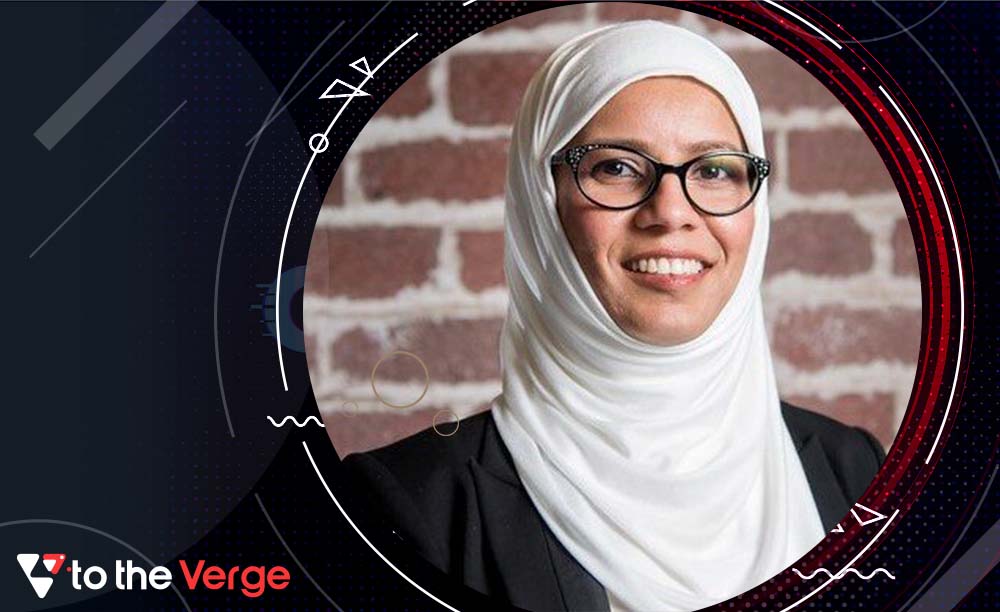Kavya Pearlman ( Founder and CEO of XR safety initiative) shares her views on privacy and safety concerns of immersive technology.
“To the Verge” had an insightful conversation with Kavya Pearlman, Founder, and CEO of the XR Safety initiative (XRSI). She shared her thoughts on how the XR Safety initiative (XRSI) builds a guarded environment for immersive technology to maintain safety and privacy. Read till the end to find out more.
About XR Safety Initiative
Kavya shared, “XRSI was set up in 2019. It is an international non-profit organization. We have headquarters in San Francisco, Italy, and Europe. So we are US-based and Europe-based. Our mission is to help build safe and inclusive immersive technology.”
The organization is vocal and active in working towards concepts such as privacy, ethics, safety, security, cyber security, and inclusion. But, Kavya adds, “We as a standard developing organization are aware that people out there are not speaking the right language and don’t agree on certain terms because it becomes challenging when there is a constantly emerging and changing technology.”
To resolve the affairs accompanied by the emerging technologies, the organization has adorned standards with various diversity and inclusion programs like cyber XR Coalition, child safety initiative, medical XR advisory council, a trustworthy media platform – ready hacker one, a data classification framework.
She adds, “Big tech companies are for-profits, they can change their terms and conditions any time, where the person would go if they have problem with the platform, to mitigate this We also rolled out an independent oversight board for and by the citizens – Metaverse Reality Check (MRC).”
“It is a board where anybody can file complaints and petitions. The MRC informs governments how people can potentially gain the power back.”
Privacy And Security as a Risk in XR
Kavya thinks that Immersive technologies are augmented, virtual, mixed reality, extended reality, or any other intersection. The difference between XR immersive technology and traditional technology is that immersive technology is much more intimate. You are more likely to injust the experience through audio-video simulation.
She states that “Immersive technologies are coded. Previously these codes were limited to the software, network, nodes, server, wires, etc. Now it’s directly rendered and shown to us and affects our brain, and we use these devices to play video games”.
“So concerning security, the attack surface limited to software and servers is now our living room because somebody could now potentially disable our safety boundaries within the virtual world.” In kavya’s opinion, we must comprehend that if these technologies heal us, they may also hurt us.
Kavya explains that these technologies can not be made without code when it comes to privacy. Then, she commences a term, i.e., Collingridge’s dilemma. She says, “It is a vast problem, we can’t anticipate full risks until the technology is fully materialized, but by the time we fully anticipate, it may be too late to remove those risks.”
“This is the issue with the privacy in XR as we are collecting all this massive data to make these experiences happen because we need contextualized artificial intelligence to make these decisions, to make safety happen, to render some of the technologies but at the same time the same data is capturing our mood and our gaze.”
She adds that these problems could lead us to Biometric Inferred Data (BID) capture.
And the massive data collection would lead to many unintended consequences.
Increase in The Vulnerability of Metaverse
Kavya elucidates that we can create, connect, and commerce with increasing metaverse.
- Create virtual goods, environment, etc., all the digital stuff, including NFTs.
- Connect when you bring people together. You will be able to connect with people in holographic form, virtual reality, and augmented reality. You can probably have vulnerabilities.
- Commerce is when you exchange virtual goods using crypto or traditional economy. Wherever there is money, hackers are everywhere. There will be legal issues, scamming you, and many more. These will be amplified in the metaverse. One being intimate and two real-time.
XRSI’s Take on Privacy and Safety Setbacks
Kavya shared her thoughts that we have to start with awareness to educate people about these technologies and how to use them.
She enlightened us with various practices their company is following. For example, she shared, “We put out lots of infographics for children and parents, what not to do, what to do. We also conducted an XR safety week where we conducted discussions with people.”
She thinks that education is the key; otherwise, people will be left behind. So one should focus on accessibility, inclusion, and educating people. We should not just only focus on the educated population but also make an equitable effort for underprivileged people and underdeveloped countries.
“We are trying to educate many governments, including the US government, on how this should be approached, how they should educate their own constituents. So we wrote our very first novel – safety and privacy framework for XR”.
“We also carried forward a child safety initiative framework for children safety in the metaverse and a medical XR advisory council that aims to regain people’s trust. We also educated various governments to change laws. We influenced many laws by talking to Australia’s e-safety commissioner. Our law standards were used to create the very first positioning statement for an entire country of Australia”.
How Metaverse is Built on a Solid Foundation of Diversity Inclusion
Kavya delineates, “We need to create equitable measures as these technologies are complex and have a human element to be understood. People need to live and experience this technology to be aware of the opportunities and risks associated with it”.
“Governments need heavy investments so that people are not left behind. Companies need to make sure that they consider diverse perspectives onboarding diverse people of all race, gender, caste”.
In Kavya’s opinion, it should be made sure that when we advise the government, they should make diversity and inclusion their priority.
“We need to make sure that people from minority backgrounds should get free education sometimes; for this, we are rolling out scholarship programs.”
Future of Our World With Vigorous Technologies And XRSI’s Role In It
Kavya states, “It can be a beautiful future if we trust these technologies.” She feels that these technologies have failed us like silicon valley. They have aided in undermining democracy because people make these technologies for profit. They are exploiting our human vulnerability.
She adds, “However, my role is to enable that trust; therefore, at XRSI, we bring the community of researchers, governments, professionals, and activists together to help build standards, framework, and put trust back in the ecosystem.”
Conclusion
The interaction with Kavya Pearlman transformed our perspectives on how privacy and safety can be a risk to immersive technologies. She endeavors to forge a safe environment for immersive technologies where people cherish their virtual and digital experiences, trusting companies like XRSI. She aims to erect a future space where privacy, safety, ethics, security, and cyber security are always at the forefront.
Kavya Pearlman is the founder and CEO of XR safety initiative ( XRSI ), a non-profitable organization. She was a hairstylist when she moved to the US for 5,6 years. She did her masters in network security. She was the third-party security advisor for Facebook in 2016 during US presidential elections. During that time, she became aware of how technology can have a grave impact on society when the risks were what she was tackling. The security and risk landscape for Facebook. After leaving Facebook, she became the head of the security for the oldest existing virtual world, Second life, where she had the privilege to help them build a virtual reality platform called Sansar; she was tackling two virtual economies. Her experience with several companies made her understand how these virtual platforms are impactful and how specific consequences can occur at any time.
Khatija is a Senior Editor at To The Verge. Her interest in tech started when she came across AI, IoT, and XR. Always keen to learn the latest tech peripherals, Khatija loves to interact with tech industry experts and dig for information relating to emerging technologies. When not nerding over technology, she can be found on the couch binging mystery or sci-fi movies.







![How to Update and Reinstall Keyboard Drivers on Windows 10/11 [A Guide]](https://wpcontent.totheverge.com/totheverge/wp-content/uploads/2023/06/05062841/How-to-Update-and-Re-install-Keyyboard-Drivers-on-Windows-10.jpg)
